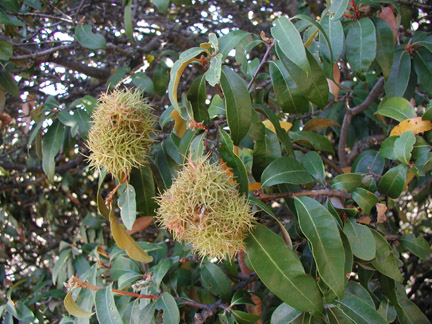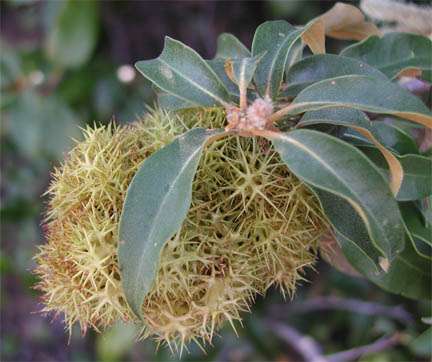
|
Chinquapin
Castanopsis chrysophylla
First posted July 31, 2004 Last updated
July 31, 2004

This chinquapin was
photographed July 31, 2004, at Mt Tamalpais State Park,
along the Loop Trail.

The Chinquapin is a uncommon member of the Redwood
Forest. Its Latin name, castanopsis, means resembling
Castanea, a chestnut and related genus, while chrysophylla
means golden leaf referring to the golden yellow scales
on the underside of leaves (see photo above). It is
usually under 30 feet, but can attain a height of over
100 feet and diameters of 4 feet. The bark is a dark
red brown, with deep fissures. It grows in mountain
slopes and ravines between 3,000 and 6,000 feet. They
occur individually among the coastal redwood forests
and in large stands in association with juniper and
oaks. It is a slow growing species living to over 400
years. When the trees flower in late spring, they are
covered in white blossoms which emit a strong odor.
It is a masting species, producing large crops of nuts
in a cyclical manner, after several years of low nut
production.

Note the leaf shape and the spiny covering
of the nut.
This chinquapin was photographed July 31, 2004, at Mt
Tamalpais State Park, along the Loop Trail.
We have not yet found a chinquapin at Caz, but it is
listed since it is found in redwood regions around Caz,
and we expect to find one as we explore up the ridge
behind the camp proper, in the lands we own above Austin
Creek Road.

References
USDA has a reference sheet on chinquapin.

|

|

